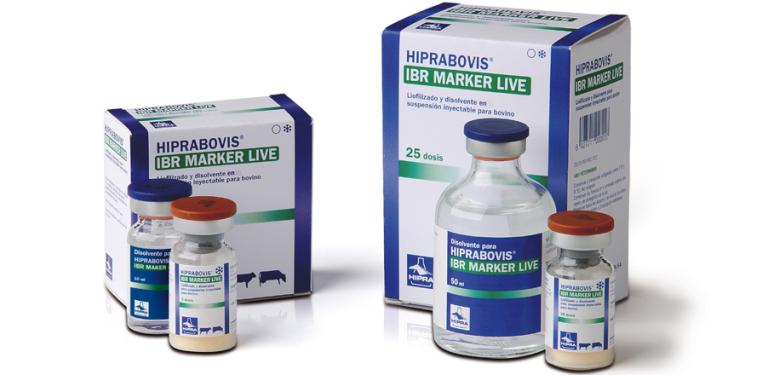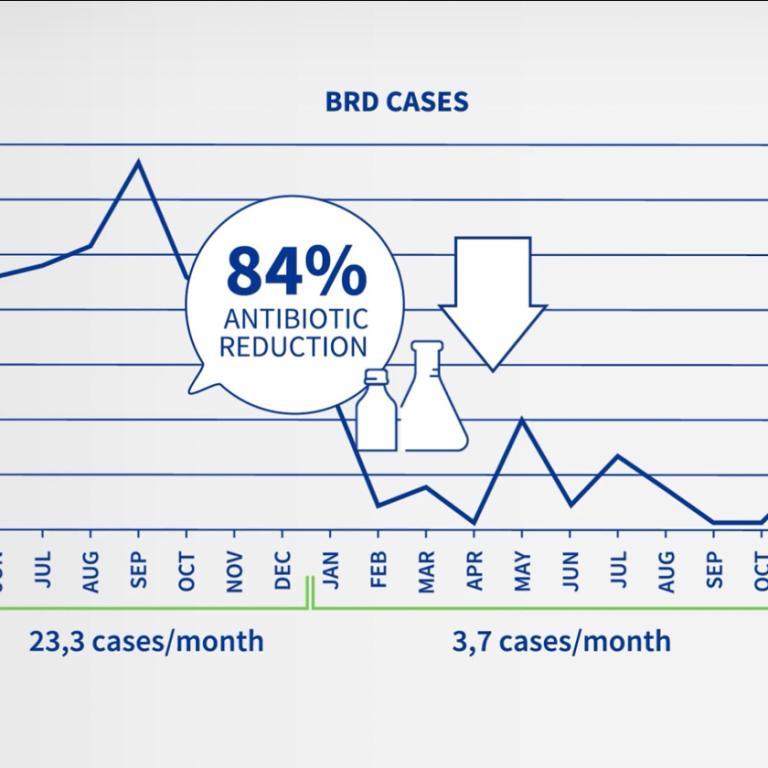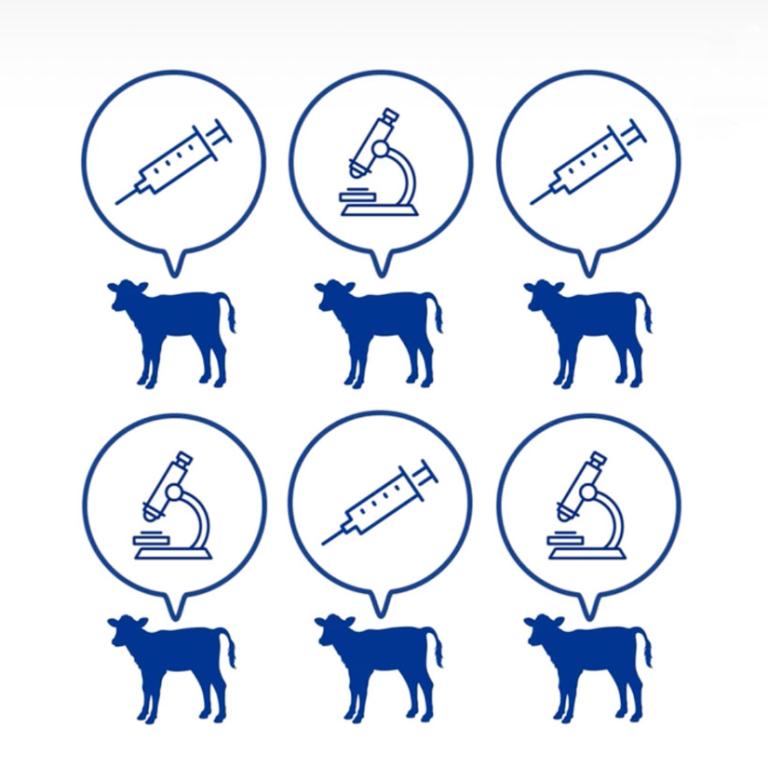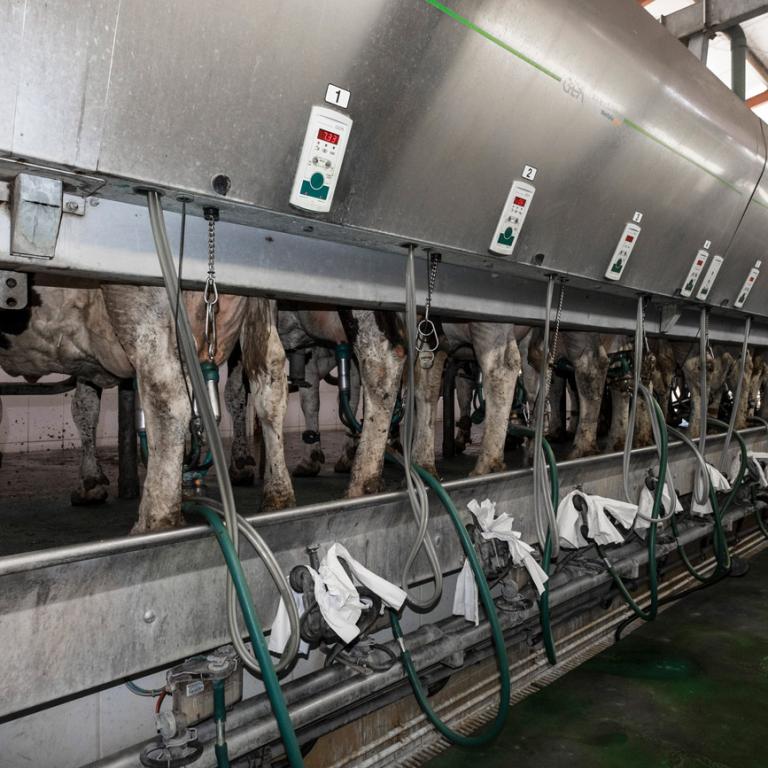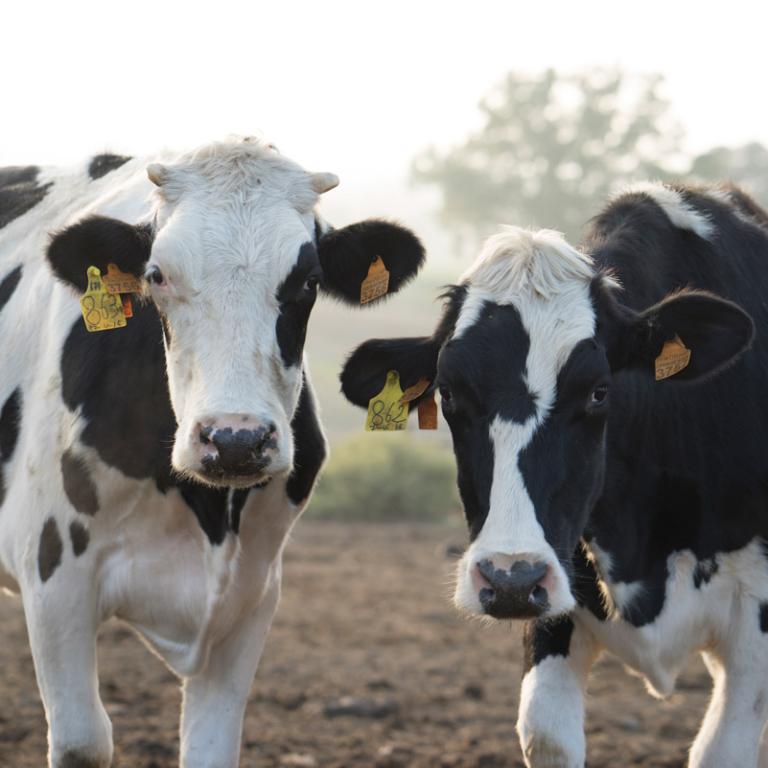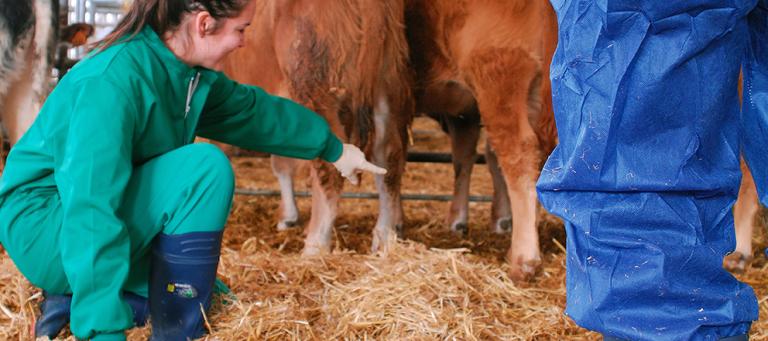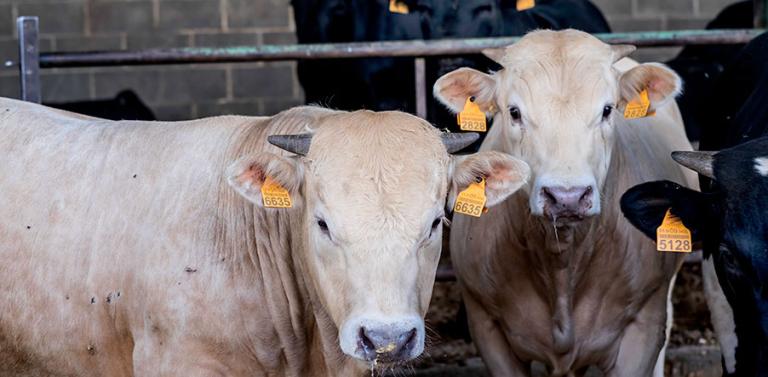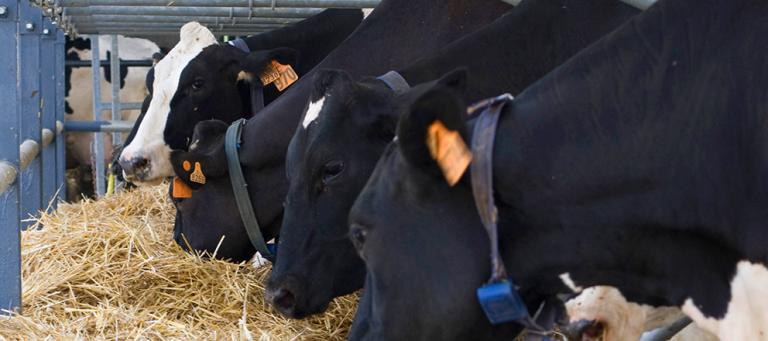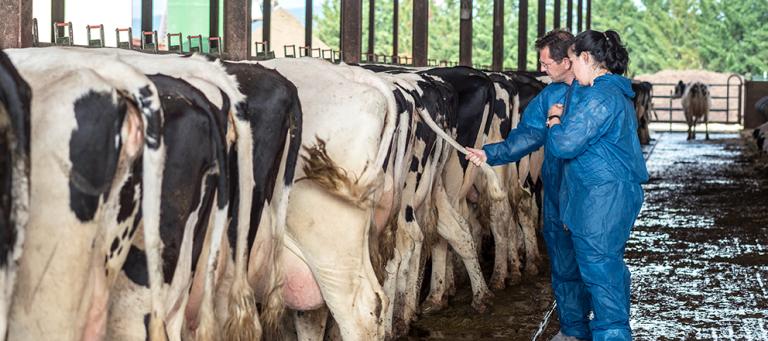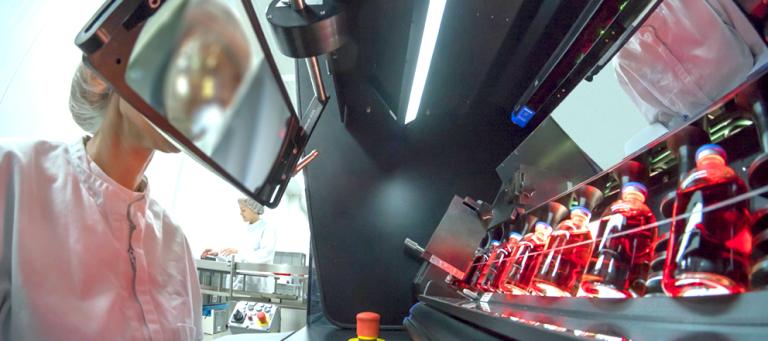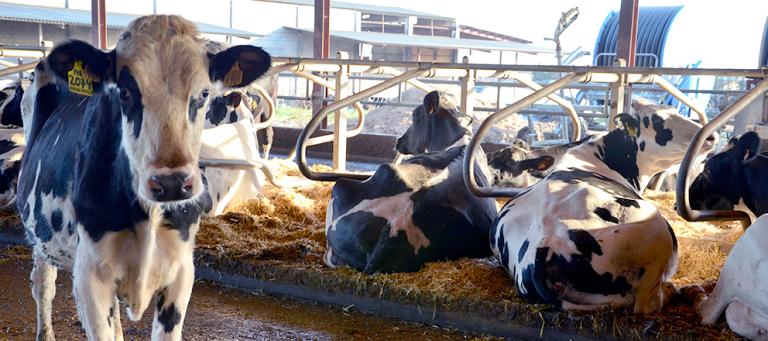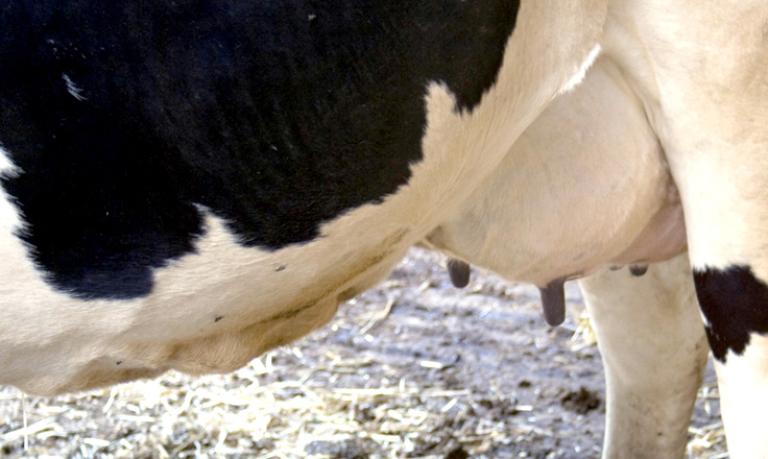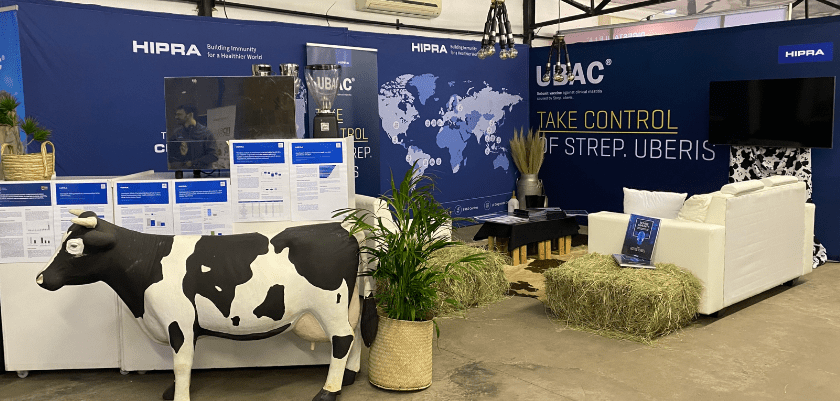AETIOLOGY:
Parainfluenza-3 virus (PI-3). RNA virus. Belongs to the Paramyxoviridae family. Infections caused by PI-3 are common in cattle. Although the PI-3 is capable of causing clinical disease, it is usually associated with mild or subclinical infections. The most important role of PI-3 is as a trigger that can lead to the development of secondary bacterial pneumonia.
TRANSMISSION:
By direct contact or via aerosols from an infected animal to a healthy animal.
CLINICAL SIGNS:
Respiratory signs: fever, cough, serous nasal discharge and lacrimal fluid, as well as increased respiratory rate and lung sounds. If the disease is not complicated by bacterial pneumonia, the clinical signs are mild, usually without mortality.
LESIONS:
Pulmonary consolidation (usually cranioventral), bronchitis, bronchiolitis and alveolitis, which results in broncho-interstitial pneumonia. Severe or fatal cases are usually accompanied by a concomitant bacterial bronchopneumonia.
DIAGNOSIS:
Detecting PI-3 is often difficult. Isolation is more likely if the samples are taken from animals that are either in the incubation phase or in the acute infection phase.
In the acute phases, the PCR is a quick test with high specificity and the greatest sensitivity.
Paired serology (ELISA) is also possible.
TREATMENT, PREVENTION AND CONTROL:
Treatment is limited to reducing the clinical signs by NSAIDs therapy and treating secondary bacterial pneumonia with antibiotics.
All measures taken to manage risk factors, biosafety and the environment with a view to controlling bovine respiratory disease (BRD) are useful in controlling infection with PI-3.
PI-3 vaccine strains are often used in combination with other respiratory viruses (BRSV, BHV-1) in multivalent vaccines.







